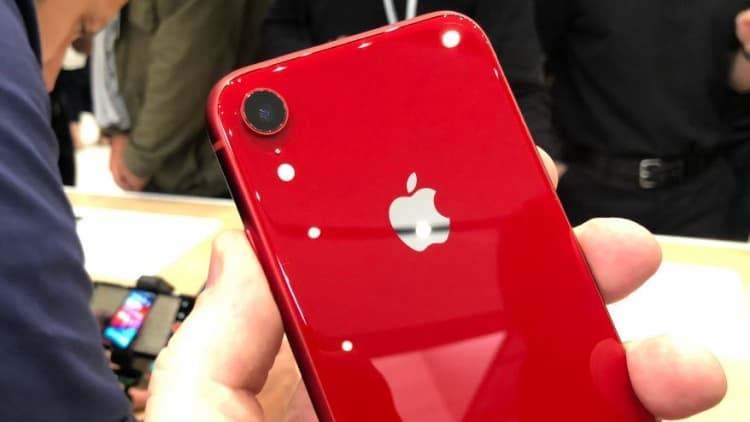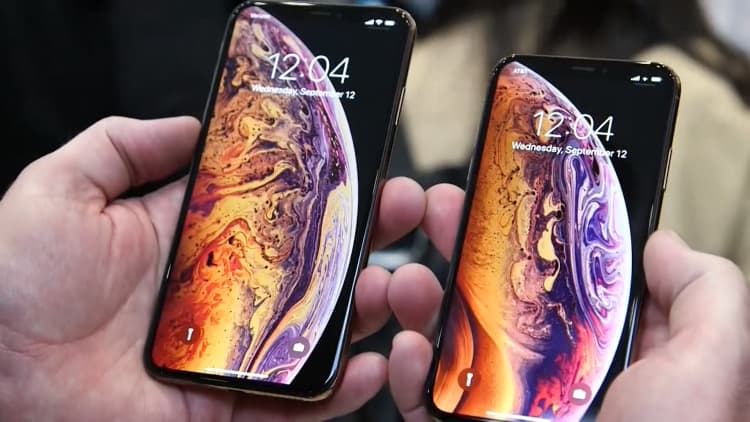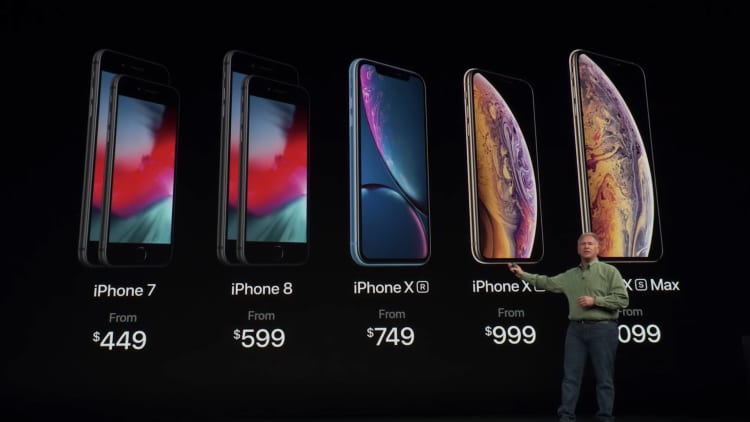Apple just announced three new iPhones: the high-end iPhone XS Max, the iPhone XS and the iPhone XR.
If you're buying a new iPhone soon, you'll need to pick between those and the older models Apple will continue to sell, including the iPhone 7 and 8, and their larger-sized Plus cousins.
It's a lot to take in, so I'll try to help you figure out which model is right for you.
iPhone XR: The best choice for most people
I think this is going to be the iPhone for most people. Of all the phones in Apple's iPhone family, it offers the best bang for your buck.
It starts at $749, has a large 6.1-inch display, Apple's latest A12 Bionic processor, Face ID for unlocking the iPhone just by looking at it, a high-end glass and aluminum design, water resistance (but not as water-resistant as the iPhone XS or iPhone XS Max), and five different colors to choose from.
You will sacrifice on the LCD display, which isn't as bright or colorful as the OLEDs used in the iPhone XS and iPhone XS Max, or in last year's X.
It also lacks the additional camera hardware (a second lens) that the more expensive new iPhones have, but Apple's pretty convinced it's still one of the best cameras it has ever put in an iPhone.

iPhone XS: If you regret skipping the X last year
This is almost the best iPhone money can buy. If you sat out the iPhone X last year and were always envying the ones your friends had, this is a good phone for you.
It has a large 5.8-inch screen but, like the iPhone X, is still easy to hold. It comes with up to 512 gigabytes of storage, promises water-resistance in 3 feet of water for up to 30 minutes, has Apple's dual-camera system for better portrait and low-light photography, and boasts a colorful OLED screen that will give you the best performance for movies and gaming.
It starts at $999, which is in line with last year's iPhone X pricing.
That brings us to the other point: If you already have an iPhone X, there's very little reason to upgrade to the Xs, unless you're one of those people who just has to have the latest model. It's incrementally better, but not a major change.
iPhone XS Max: If you like big screens and can afford the best
This is the best iPhone Apple makes, so long as you don't mind big screens and can afford it. It's the most expensive iPhone Apple has ever sold: the entry-level version is $1,099 and the 512 GB model will set you back $1,449, which is more than some Macbooks.
The Max has a huge 6.5-inch OLED display -- that's larger than the 6.4-inch display on Samsung's Galaxy Note 9, and considerably bigger than the 5.5-inch displays on the old iPhone Plus models (it fits more screen into a relatively compact package by getting rid of the black borders around the edges).
It also promises up to an hour longer battery life than the iPhone XS, which is a nice plus. It has the same cameras as the iPhone XS, water-resistance at up to 3 feet of water for 30 minutes, and has Apple's new A12 Bionic processor, Face ID and more.

iPhone 7 and iPhone 7 Plus: If you're on a tight budget
The iPhone 7 starts at $449, and its big-screen cousin, the iPhone 7 Plus, starts at $549. Those are solid prices for phones that were state-of-the-art two years ago and are still really good. The Plus is a particularly good deal if you want a large-screen phone without paying more than $1,000 for the Max.
You have to be OK not having new features like wireless charging or Face ID. But the 7 will still run everything in the app store, has a fingerprint reader, and its camera was among the best on the market just two years years ago.
Since you're going for the bargain phone, you're only going to get 32 GB of storage at that starting price. This means you don't need a lot of space for videos, large apps like games and lots of pictures (that aren't otherwise just stored in the cloud). You can also get 128 GB if you pay $100 more.
It's a good bang-for-your-buck phone, but in a couple of years it probably won't be getting software updates from Apple.
iPhone 8 and iPhone 8 Plus: Skip 'em
The iPhone 8 ($599 and up) and iPhone 8 Plus ($699 and up) are the only remaining phones from last year, since Apple discontinued the iPhone X in favor of its newer devices.
They have better cameras than the iPhone 7 and iPhone 7 Plus, and add on new features like wireless charging. They have the home button, if you still want that, and have more storage space — 64 GB is the minimum, or 256 GB if you pay $100 more.
But most people should probably skip the iPhone 8 at this point. Either save $150 and get the iPhone 7, or jump up to the iPhone XR, which offers almost all of Apple's latest features for $150 more.
If you bought an iPhone 8 last year, you don't need to upgrade — it's still a good phone — but if you didn't, you probably shouldn't buy it new.
Correction: Apple announced three new iPhones on Wednesday. An earlier version misstated the day.



